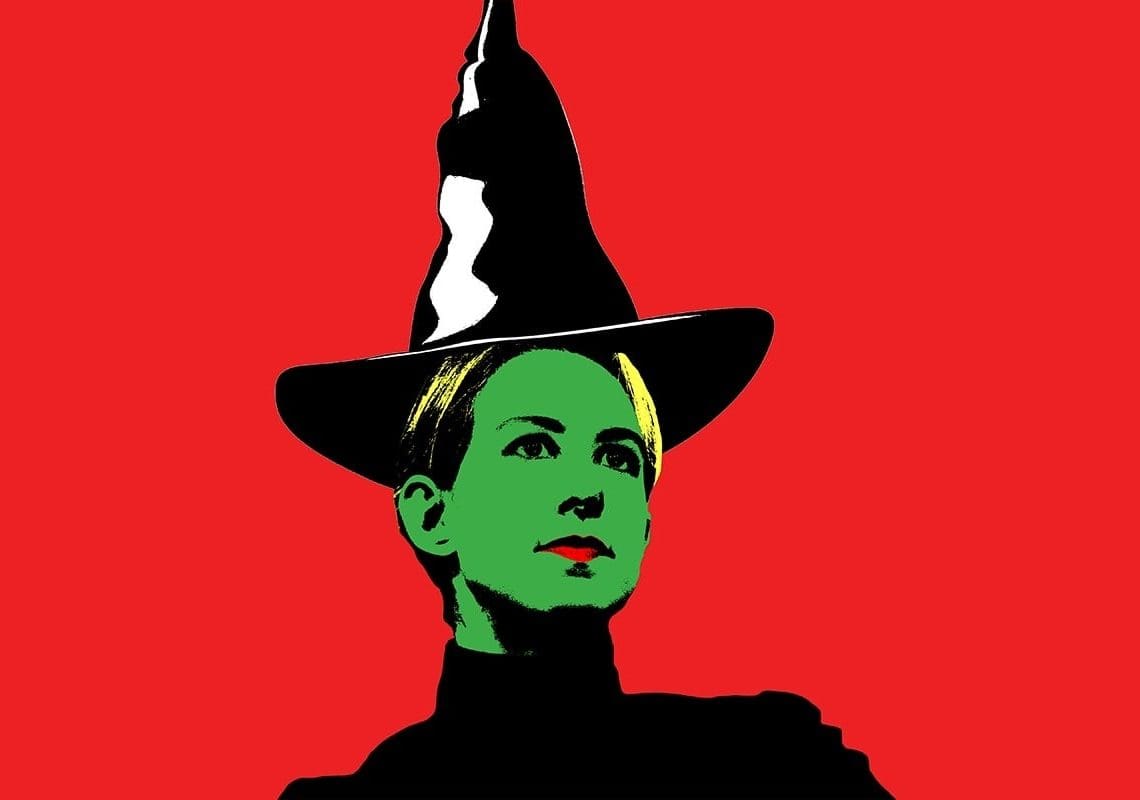Illusion or reality? Stakeholders and executives can only tell if they follow the yellow brick road of due diligence and encourage rainbow diversity throughout their organization, including the board. Join Sandy Erez in pulling back the curtain on the Theranos debacle – before you set your sights on your next corporate wizard.
Everybody loves a medical breakthrough. Our hearts race (especially if we need a cure for arrhythmia) as we imagine the best minds in health care technology clearing brambles on the winding road to better health. Perhaps, this is the long-awaited miracle that will cure Auntie Em’s and Uncle Henry’s creaky ailments or curb the bizarre behavior of poor, demented Miss Gulch. The universal quest for health is red hot. So, it’s a no-brainer and no wonder that investors would put their faith – and millions of dollars – into backing a medical technology “drama” that was sure to appeal to a wide-eyed (and paying) audience. What could possibly go haywire in an ethical society of nerdy do-gooders?
Everything! despite the edge-of-the-seat trailers, a sterling cast and more turns and twists than a flying monkey, this flick was a flop! Join me in examining why this fateful production that was slated to gross millions ended up in a heap like a farmhouse in a tornado. (Warning: spoilers ahead.)
Plot Summary: Pay No Attention to the Man Behind the Curtain
Our story begins in 2003 with our perky young heroine, Elizabeth Holmes, on a crusade to spawn an inexpensive medical testing device requiring just one drop of blood for accurate disease analysis.
Spinning a heart-wrenching story involving a dead relative and an acute fear of needles, Holmes manages to tug at the heartstrings of investors and media alike. Enamored with the next big tech icon – a female one at that – they wave their money wands and fill her coffers with over $700 million. And just like that – voila! – Theranos, the upstart start-up, magically appears from the Wizard’s black hat.
In the next scene, potions are concocted in the Theranos castle and all seems to be well. But behind the scenes, employees in the dungeon are feverishly slaving to get a working prototype that would meet regulatory inspections deadlines and be ready for drug trial deals with pharmaceutical kings such as GlaxoSmithKline and Pfizer. As the endless monotonous scene drags on, the sands of time slip through the hourglass – with no working product either on site or in sight.
As rumors of technological failures and cover-ups start to seep out to the press, blood chills in the veins of regulators, investors and even employees. Skies darken, and by 2015, the warmth of sunny valley media hype changes to whistleblowing thunder and whipping winds.
Sadly, by the time the worst of the storm had passed, the lightning had illuminated Theranos as the outright fraud it was. The show closes with Holmes charged with two counts of conspiracy to commit wire fraud and nine counts of wire fraud, carrying a potential sentence of 20 years in prison.
For Holmes, getting home over the rainbow looked to be a longer journey than ever (unless that home is San Quentin jail).
Cast of Characters: Are You a Good Witch or a Bad Witch?
The cast remained fairly loyal to the original characters, though with some quirky deviations. In this sequel, there was more than just one person without a brain (the venture capitalists, investors, the board, the public), a few without a heart (those who kept going while knowingly risking lives) and just a handful with courage enough to play the part of the whistleblowers.
The plot takes a sudden surprising turn when Wall Street Journal investigative reporter John Carreyrou and former Theranos employees Erika Cheung and Tyler Shultz take the stage and uncover the imposter.
Spoiler warning: One ingenious casting shocker was that the part of the Wizard wasn’t played by a human being. Technology got the role instead — and delivered an Oscar-worthy performance as an amorphous enigma that never stepped from behind the curtain because it never existed. And the grand, didn’t-see-it-coming plot twist is when we understand that Dorothy from Kansas isn’t an innocent wunderkind lost in the woods at all. She’s the wicked witch herself!
Oh, and about the dog: Holmes’ dog, Balto, as Toto the dog just didn’t cut it.
Creative Aspects: I’ve Got a Feeling We’re Not in Kansas Anymore
The Wizard of Oz stunned and captivated its 1939 American audience with its magical flights of fancy, serving as a soothing panacea for post-depression ills in a brink-of-war era of discontent. And one single moment of cinematic genius stood out above them all: the moment the darling protagonist (Dorothy) steps out of her lackluster existence, effervescing into the vibrantly hued bubble called Oz.
This seamless transition from black and white to full color within the same scene stunned moviegoers and cinema critics alike, appearing to be a technological breakthrough in filming technique. In fact, the producers capitalized on the element of surprise to create an unforgettably powerful illusion where dreams born in dry dust could miraculously come alive. This “wow” effect led viewers to toss logic into the roaring winds of the tornado and fly over the rainbow with their heroine, forever invested in her happiness.
Sound familiar? Regarding the Theranos sequel, just switch out the words “the Land of Oz” for “Silicon Valley” and “Dorothy” for “Elizabeth” …with stock market IPO gold at the end of the rainbow.
Production: Poppies, Poppies… You’re Getting Sleepy
One of the reasons the Theranos saga dragged on so long is that supporting actors (the board, advisors and investors) stumbled with their lines and missed their cues. Maybe it had to do with the spell cast by U.S. diagnostic-lab industry crystal ball projections of $70 billion in annual sales. Apparently, the vision of unending green dollars, spread out before them like a field of narcotic poppies, lulled them into sleepy stupidity.
In fact, the board (who had no knowledge of medical or any other technology), should have been fired from the actors’ guild. They forgot their critical role in conducting financial audits or insisting on peer review research to validate the technology they were pushing out to the public. Shame on them for shirking their duties after being given such important roles in the production.
Additionally, one must note the glaring absence of a board diversity policy (maybe that document had been eaten by Balto), as the board constituents were all the same color and age, with similar credentials.
The producers should have learned a lesson from the original film: stick to munchkins, lollipop kids and horses of a different color. Then maybe there would have been a chance for differing opinions and a vast array of knowledge at the boardroom table.
Critical Response: Surrender Elizabeth!
Even with all the special effects, the Theranos remake was a crushing disappointment, both financially and critically. But let me give you a movie critic’s insider tip: There wasn’t actually a technological breakthrough in the original Oz, either. You see, unbeknownst to 1939 audiences, the “revolutionary” color transition was nothing more than an illusion. Producers realized they could pull off the transition trick by painting half the set in sepia tones, the other half in color. When drab Dorothy’s acting double opens the door to a brilliant Oz, there was no cinematic feat at all — just an extension of the color palette that fooled the eye and the audience. Technicolor was an emerging technique at the time, which made everyone easy to convince.
So, if a dearth of “real” technology wasn’t the clincher, what’s the reason for the success discrepancy between the two movies?
The answer is as plain and simple as the fabric of Dorothy’s gingham dress: Evil winning out over ethical good. The protagonist in the Theranos sequel duped an audience that believed with all their hearts that their heroine was in search of an ethics-based dream – be it love of family or better health. By the time the credits rolled, this darling of the media, formerly valued at $10 billion, had suffered a corporate meltdown as a dramatic as the demise of the Wicked Witch of the West – to the delight of the watching crowd.
Ironically enough, if Elizabeth were both Dorothy and the Wicked Witch, she actually killed herself using the cinematic symbol of purity and life. You guessed it: Water. I guess one tiny drop DOES makes a difference (the Theranos slogan).
Rating & Recommendation: Never Having to Say Goodbye Too Soon (Another Theranos Slogan)
The last scene in the original Oz production was poignant and tearful for me as a child. Imagine saying goodbye forever to the people you love – even if they are a scarecrow, a tin man and a lion. Luckily for us, this is 2019 and not 1939, when unicorns and crystal balls were figments of the imagination existing only on the silver screen. Today, we have biotech companies so innovative that we find ourselves falling for a sleight of hand or a trick of the eye rather than insisting on slow and plodding medical research. We find no need to doubt those wizards living in the valley, those purveyors of magic – they must be beyond reproach since they’re working to save the people we love! Surely, we tell ourselves, the aggressive corporate marketing and media hype around the latest cure is more than just a passing viral marketing infection.
I give this movie a big fat zero. If the prognosis for any health care startup promises a long and healthy life (and perhaps a fat bank account), shouldn’t we all be flying down that yellow-brick road to buy a ticket to the premiere?
I don’t think so. I wouldn’t see a movie like that again. Unless, of course, I got hit on the head by the flying window of opportunity.














